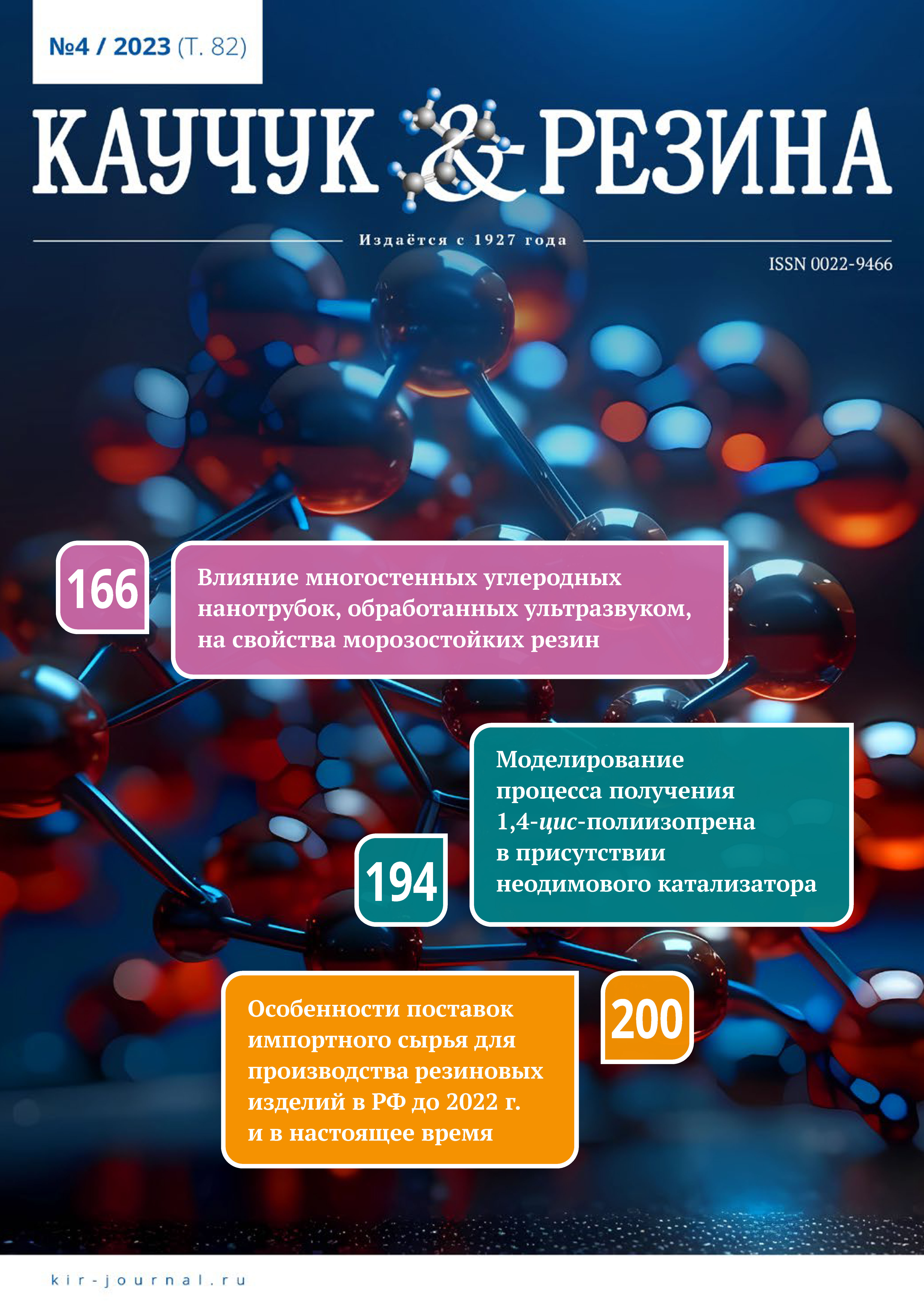Simulation of the Process of Obtaining 1,4-cis-Polyisoprene in the Presence of a Neodymium Catalyst
Published 2023-09-01
How to Cite
Abstract
A mathematical model of the process of polymerization of isoprene in the presence of a neodymium catalyst under conditions of a preliminary hydrodynamic effect using a tubular turbulent apparatus is proposed. Modification of the catalytic system of the composition NdCl3∙nIPA-TIBA-Pip in turbulent flows leads to its monocentricity, which determines the nature of the further model description of the system. As part of the implementation of the kinetic approach, a mathematical model was obtained that describes the process of obtaining 1,4-cis-polyisoprene. The performed computational experiments showed that, despite the presence of diisobutylaluminum hydride, which acts as a molecular weight regulator, in the system, triisobutylaluminum, which is initially present in the catalyst composition, plays a significant role in the mechanism of limiting the growth of polymer chains. The subsequent complex analysis of the results of the computational experiment made it possible to restore the kinetic mechanism as a sequence of elementary stages by adding the chain transfer reaction to triisobutylaluminum, and to identify the values of the corresponding kinetic parameters of the newly introduced reactions. Further computational experiments for the conditions of large-scale production made it possible to obtain the dependences of the conversion and weight average molecular weight on time in the context of each polymerizer, which are consistent with the experimental results.

